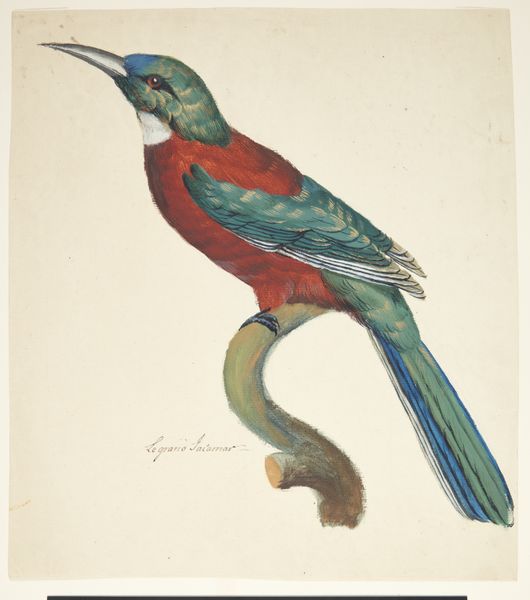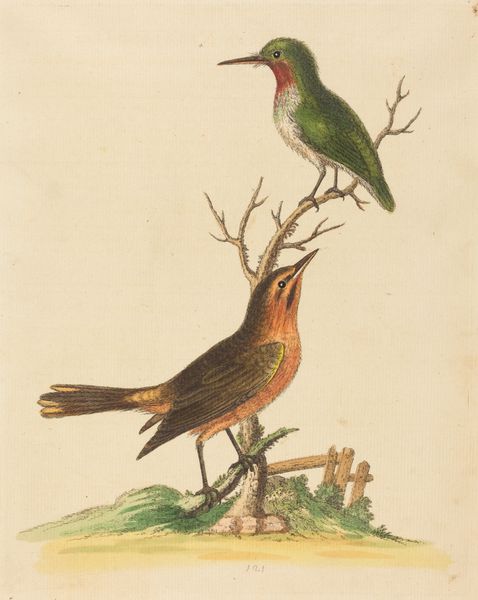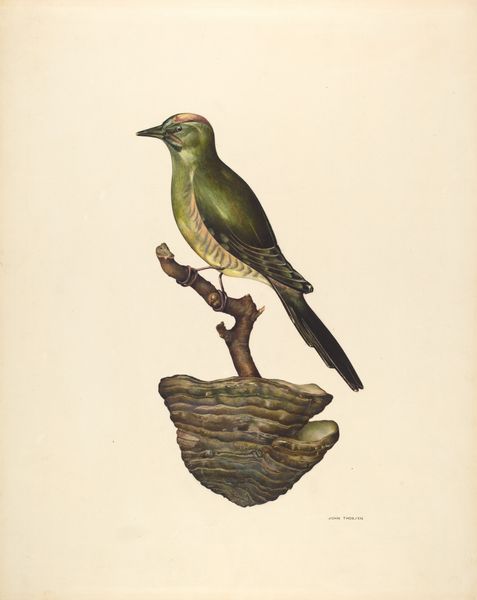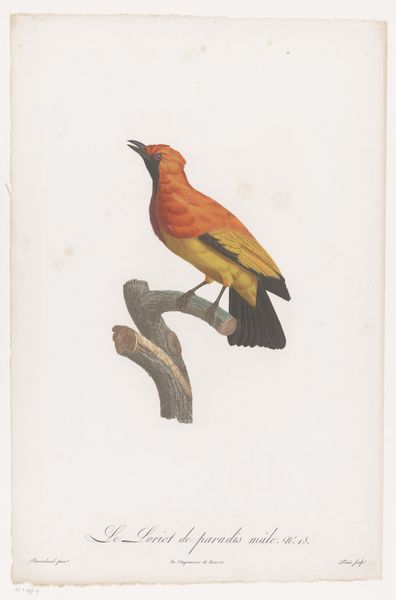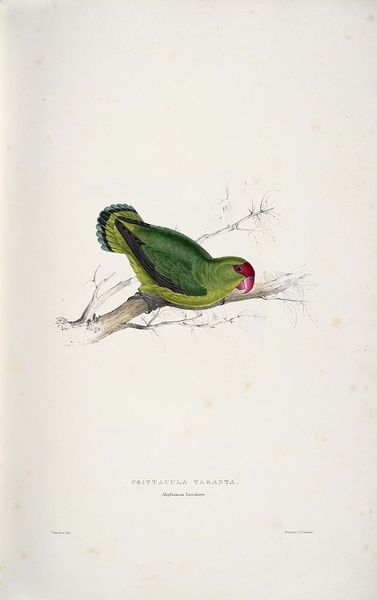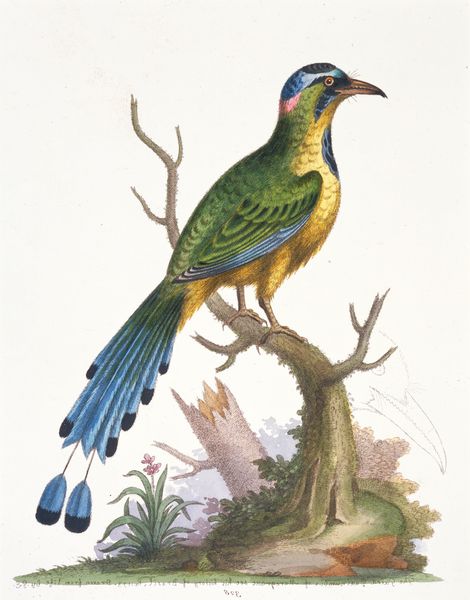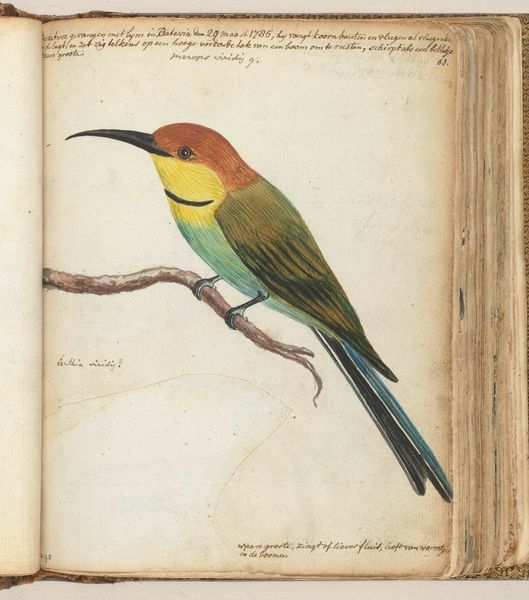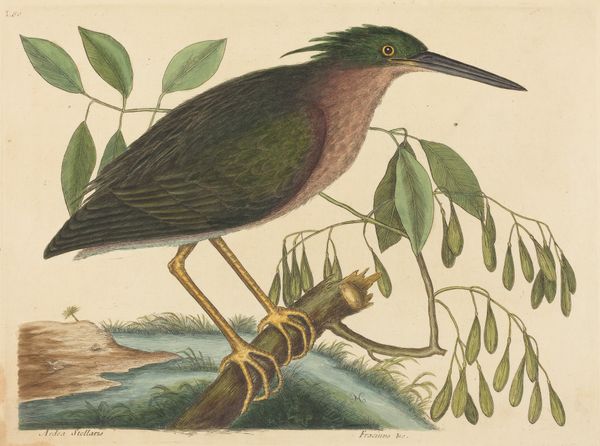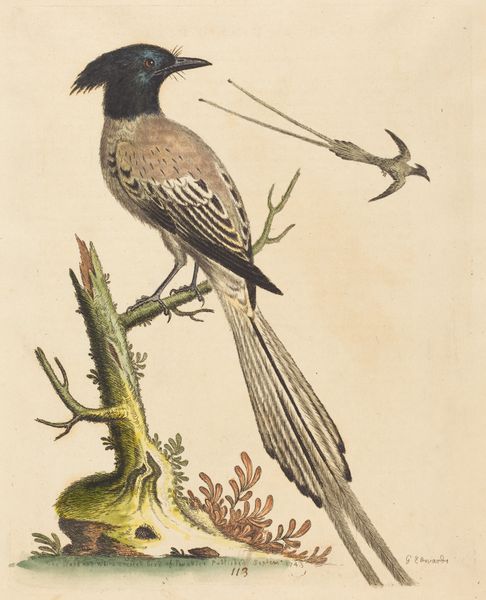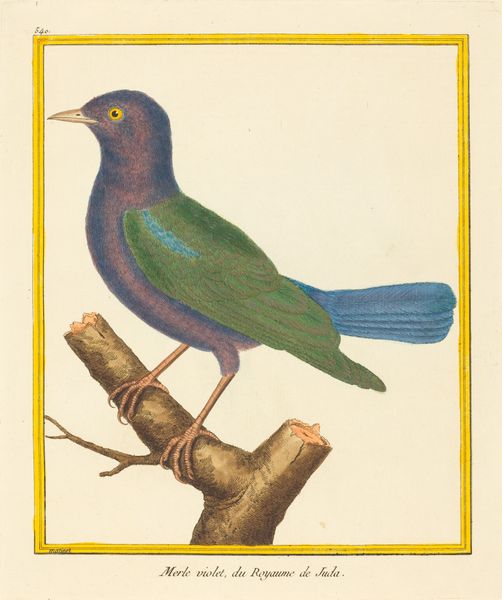
drawing, coloured-pencil, print, watercolor
#
drawing
#
coloured-pencil
# print
#
pencil sketch
#
landscape
#
watercolor
#
coloured pencil
#
watercolour illustration
#
botanical art
Dimensions: 20 x 12 1/2 in. (50.8 x 31.75 cm) (sheet)
Copyright: Public Domain
Curator: This is "No. 14. Le Guepier Daudin male." by François Levaillant, dating back to 1806. It's currently held in the collection of the Minneapolis Institute of Art, rendered with a delicate combination of watercolor, colored pencil, and print techniques. Editor: My first impression is its striking clarity and vibrant color, a beautiful balance. The cool blues in the tail pop against the warmer tones of the body, making it immediately captivating. Curator: Levaillant was not just an artist; he was also an ornithologist and explorer. This print comes from a larger body of work documenting birds. Consider the colonial context – the work embodies a Western gaze upon the natural world, informed by the desire to categorize and contain knowledge. Editor: It's intriguing to consider the materiality of knowledge production here. The paper, the pigments, the printing process—all involved various forms of labor. Each mark, each choice of color, reveals a step in the physical and social processes that transformed the natural world into a commodity to be consumed. Curator: And it is gendered. This work plays into the legacy of scientific illustration used to enforce hierarchies through objectification and observation. Was the "male" species given precedent for social and scientific importance during this time, especially given it was made for European consumption? Editor: Precisely. It's easy to be enchanted by the aesthetics, but let’s remember the chain of hands—printers, colorists, the artist himself, and perhaps unseen laborers—that facilitated its creation, alongside the cultural attitudes that informed the subject’s depiction. It raises questions about the production of both art and scientific "truth." Curator: This piece, beyond its aesthetic appeal, compels us to think about how nature is perceived and represented through social lenses of the period and asks about who decides what it's worth knowing. Editor: And ultimately, it prompts reflection on our role as viewers – how do we engage critically with representations that are so closely intertwined with colonial history and power dynamics? Curator: Indeed, a beautiful bird study is so much more than it seems. Editor: The seemingly simple becomes richly complex.
Comments
No comments
Be the first to comment and join the conversation on the ultimate creative platform.

